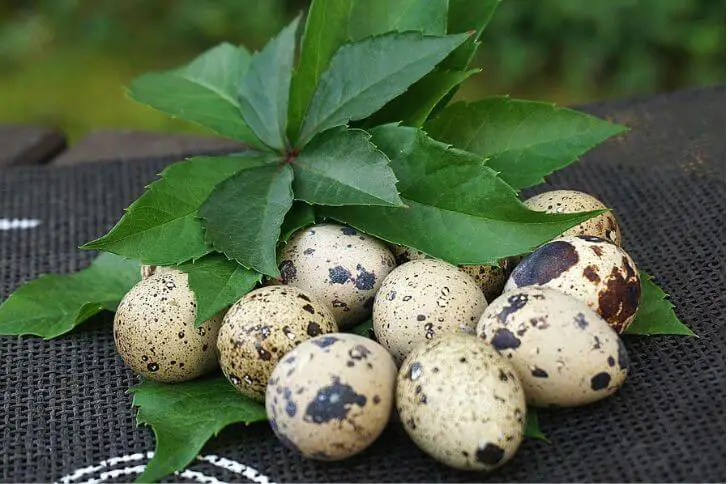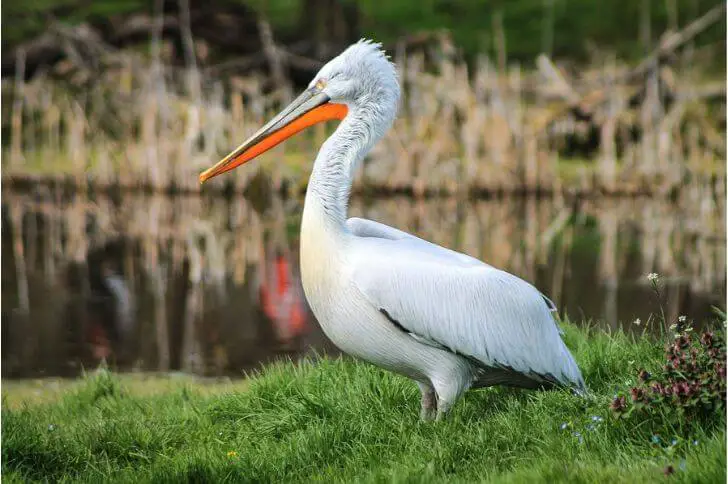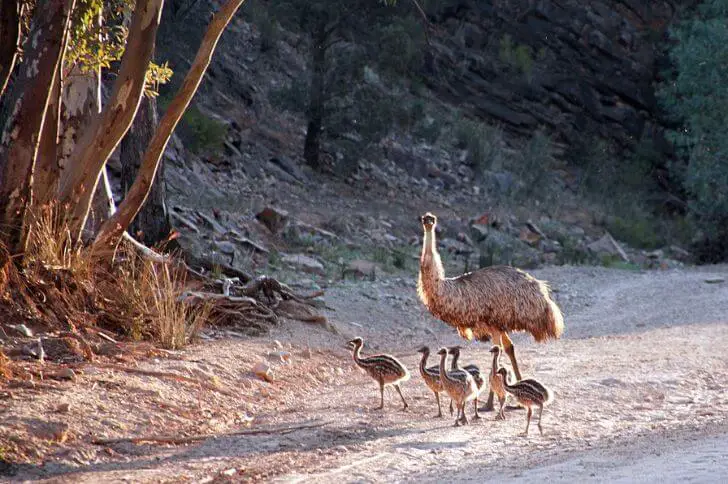Cute and fuzzy, Kiwi are small resident breeders in New Zealand. These flightless birds are the ‘unofficial’ national bird. Apart from being adorable, there are other interesting things you can learn about these flightless birds. In the article below we’ll look at its life cycle from the nest construction, eggs, and baby until fledgling.
All about kiwi eggs, nest and babies
Kiwi nest construction
Kiwi nest construction is a very unique process that is still being studied by scientists today. What is known is that the kiwi builds its nest out of sticks, leaves, and other natural materials.
The male and female work together to build the nest, and they often use their beaks to help secure the materials in place. They will also line the inside of the nest with soft materials, like feathers or fur. The finished nests are typically about 8-10 inches wide and 3-4 inches deep. Once the nest is complete, the kiwi will lay their eggs inside and incubate them until they hatch.

Where do kiwis build nests?
Now, unlike other birds, this flightless bird builds two types of nests. One, the large easily-visible nests for non-breeding season use known as roosts and the smaller well-hidden nest for breeding season.
Kiwis lay their eggs in nests on the ground. Unlike other birds, kiwis do not have a protrusion on their beaks that helps them dig into the earth to make a nest. Instead, they use their strong legs and claws to create a depression in the ground in which to lay their eggs.
Males mostly use twigs to hide the nest. These nests can be found in different places including culvert pipes, uprooted tree roots, holes in rock cliffs, and more. The entrance may be on top or through a twisting tunnel, making it hard for predators to get to the eggs. It’s important to note, breeding nests are smaller than roosts.
Also Read: Roadrunners nesting habits
Where do kiwis lay eggs?
In New Zealand, the female kiwi parent kiwis build their nesting burrows from June, the start of the cold season, and the eggs hatch February-March when the weather is warmer and there is plenty of food for the babies.
How many eggs do kiwis lay?
The female kiwi lays one egg every breeding season; from August to January. The only exception is the brown kiwi which lays two eggs during their breeding season. It lays one egg then about 25 days later, lays another egg. In their lifetime, female kiwi lay about a hundred eggs.
What color and size are kiwi eggs?
The color and size of a kiwi egg can vary depending on the specific variety of kiwi. In general, eggs are ivory or pale green-off white.
Related Read: Learn about the different types of speckled eggs
Kiwi egg size: How big is it?
Nocturnal and flightless, one of the things that make this bird unique is the size of its egg; they weigh a quarter of their body weight. Why is the kiwi’s egg so large? Scientists have explained this through the tiny-giant theory.
They believe kiwis were once large birds related to moa birds. Due to habitat loss and being hunted by humans, scientists reason that these birds had to decrease in size to make themselves less appealing but they kept their large eggs.
One average, a kiwi egg is over 6 inches in length and 5 inches wide. It can weigh up to 0.8 lbs and consists of 65% york. Also bigger eggs means better babies.
How long do kiwi eggs take to hatch?
About 65-92 days. For example, the North island brown kiwi will take anywhere from 60 to 90 days. Dad does most of the incubating, getting up to stretch and hunt for food. While they are gone, females take over.
Lonely vigil kiwi develop a brood patch during nesting season. The exposed patch helps keep the egg warm. Males will incubate the eggs and occasionally leave the nest to wet their feathers, helping balance temperatures in the burrow.
A few days after hatching, the male will not leave the egg and will use his body fat to sustain himself.
What do baby kiwi look like?
Kiwi hatching is quite fascinating. It is not as straightforward as other birds. The chick does not have a sharp beak and has to rely on its feet to break the shell, a very taxing process.
The egg will kind of fidget a little, remain still for some time, then move again. This process continues until the chick finally manages to poke a small hole on the shell, allowing fresh air through. It will then rest for a day or two.
When the chick regains its energy, it’ll continue poking at the hole with the tip of its blunt bill, until the shell gives way.
The baby kiwi looks like its parents but with shaggy fur like feathers.
What do baby kiwi birds eat?
Kiwi chicks do not eat for the first week or two of their life. When they hatch you’ll notice a large sac on their abdomen that consists of yolk.
For the next few days, nutrients from this reserve will get absorbed to its body, ensuring the chick does not leave the nest which could be dangerous. After they learn to walk, they go out with their parents and learn foraging.
How long do baby kiwi stay in the nest?
It depends on the variety. Great spotted kiwi chicks can stay with their parents for up to two years while the North island brown kiwi chicks stay with their parents for around six weeks.
It’s worth noting the chicks are vulnerable to predators. And that is why for the first few weeks of their lives they only leave the burrows at night.
The diet of a baby kiwi bird is mainly insects. They will also eat other small animals, such as worms and spiders. Baby kiwi birds will also occasionally eat fruit.
What to do when you come across kiwi eggs
When you come across kiwi eggs, there are a few things that you can do. If the eggs are still in the nest, you can place a guard around the nest to protect them from predators. You can also put up a sign to warn people to stay away from the nest. If the eggs have hatched, you can help the chicks get out of the nest and into a safe place.
FAQs
How often do kiwis lay eggs?
Great spotted kiwi lay a single egg while their relative, brown kiwi, can lay two eggs per nesting season. A mature female kiwi bird can lay up to 100 eggs during their breeding lifetime.
Do kiwi birds mate for life
A kiwi bird can live up to 50 years. It reaches maturity at around 18 months when it starts looking for a mate. Kiwis are known to pair for a lifetime or 20 years. Though not common, divorces do happen in some parts where there are high populations.
There is no grand mating dance or something like that that other birds display. A female gets to pick who she wants as a mate. Males will follow her around. If she likes one, she’ll let him mount her back and then copulation takes place.
How big is a kiwi egg?
A kiwi egg is about the size of a large grapefruit. It is oval-shaped and has a smooth, tough shell. The egg white is thick and the yolk is orange. It can weigh up to 0.8 pounds.
Can you eat kiwi eggs?
Like other ratite eggs, kiwi eggs are edible. But, in New Zealand, these birds have been listed as endangered and authorities have prohibited the hunting and eating of eggs or birds.
Which bird lays the largest eggs relative to its body size
Female kiwis. Many biologists have studied the egg development and hatching of the biggest egg by one of the smallest birds. During gestation, females are known to eat three sizes their normal size. The extra nutrients help in production of such a large egg. As the eggs grow, it takes up a lot of room in the abdomen, giving the birds a weird walking style.
On average, a fully developed egg is up to 20% as heavy as a mature female. And to ensure proper balance, the mom does not eat for some days, relying on the fat reserves built up from previous months.
Does it hurt kiwi birds to lay eggs?
Because of carrying a big egg, the small body does experience discomfort. The belly gets so big it can touch the ground. To relieve the pain, female kiwi birds are known to soak in puddles and eat as little food as possible to reduce the pressure around its belly.
Final Thoughts:
There are 5 known species of kiwi; brown kiwi, great spotted kiwi, tokoeka, little spotted kiwi, and rowi. 4 of this species lay only one egg while the brown kiwi lay one to two eggs every breeding season because of their unique two ovaries.
The eggs take up to 80 days to hatch with the male doing most of the incubating. Young birds have a yolk sac that provides them with nutrients the first few days of their lives.
We hope you’ve learnt a lot from this article. If you have other facts you’d wish to share with us, feel free to contact us.
Hi, my name is Steve. My friend and I started the spanishbirdguides.com to share our passion with other like-minded people. So, if bird watching is your thing, you’ll love this blog. I’ll share what I’ve learnt about both local birds and those found in other parts of the world. Also, I’d love to hear your experiences.



